This article includes a list of references, related reading, or external links, but its sources remain unclear because it lacks inline citations .(April 2009) |
This page lists all peers who held extant titles between 1200 and 1209.
This article includes a list of references, related reading, or external links, but its sources remain unclear because it lacks inline citations .(April 2009) |
This page lists all peers who held extant titles between 1200 and 1209.
| Title | Holder | Date gained | Date lost | Notes |
|---|---|---|---|---|
| Earl of Mar (1114) | Gille Críst, Earl of Mar | Abt. 1178 | Abt. 1220 | |
| Earl of Dunbar (1115) | Patrick I, Earl of Dunbar | 1182 | 1232 | |
| Earl of Angus (1115) | Gille Críst, Earl of Angus | 1197 | Abr. 1210 | |
| Earl of Atholl (1115) | Henry, Earl of Atholl | Abt 1190 | 1210 | |
| Earl of Buchan (1115) | Margaret, Countess of Buchan | Abt. 1195 | Abt. 1243 | |
| Earl of Strathearn (1115) | Gille Brigte, Earl of Strathearn | 1171 | 1223 | |
| Earl of Fife (1129) | Donnchad II, Earl of Fife | 1154 | 1203 | Died |
| Máel Coluim I, Earl of Fife | 1203 | 1228 | ||
| Earl of Menteith (1160) | Muireadhach I, Earl of Menteith | Abt. 1190 | Abt. 1213 | |
| Earl of Lennox (1184) | Ailín I, Earl of Lennox | 1184 | 1220 | |
| Earl of Carrick (1184) | Donnchadh, Earl of Carrick | 1186 | 1250 |
| Title | Holder | Date gained | Date lost | Notes |
|---|---|---|---|---|
| Earl of Ulster (1205) | Hugh de Lacy, 1st Earl of Ulster | 1205 | 1242 | New creation |
| Baron Athenry (1172) | Robert de Bermingham | 1172 | 1218 |

Richard III was King of England from 26 June 1483 until his death in 1485. He was the last king of the Plantagenet dynasty and its cadet branch the House of York. His defeat and death at the Battle of Bosworth Field marked the end of the Middle Ages in England.

Earl of Warwick is a title in the Peerage of the United Kingdom which has been created four times in English history. The name refers to Warwick Castle and the town of Warwick.

Duke of Northumberland is a noble title that has been created three times in English and British history, twice in the Peerage of England and once in the Peerage of Great Britain. The current holder of this title is Ralph Percy, 12th Duke of Northumberland.

Earl of Leicester is a title that has been created seven times. The first title was granted during the 12th century in the Peerage of England. The current title is in the Peerage of the United Kingdom and was created in 1837.

Viscount Hereford is the oldest extant viscountcy in the Peerage of England, making the holder the Premier Viscount of England. The title was created in 1550 for Walter Devereux, 10th Baron Ferrers of Chartley.
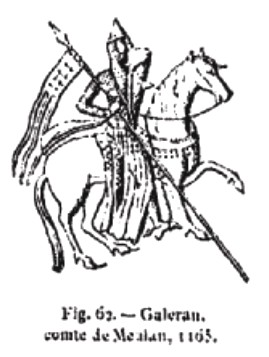
Earl of Worcester is a title that has been created five times in the Peerage of England. Worcester is a cathedral city in Worcestershire, England.

The title of Duke of Montagu has been created twice, firstly for the Montagu family of Boughton, Northamptonshire, and secondly for the Brudenell family, Earls of Cardigan. It was first created in the Peerage of England in 1705 for Ralph Montagu, 3rd Baron Montagu of Boughton, with the subsidiary title Marquess of Monthermer, but became extinct in 1749. The 1st Duke had been created Earl of Montagu and Viscount Monthermer in 1689. The Dukedom was then recreated in the Peerage of Great Britain in 1766 for the late Duke's son-in-law George Brudenell, 4th Earl of Cardigan, who adopted the surname of Montagu. On his death in 1790 the dukedom and marquessate became extinct a second time, but the earldom passed to his brother, James Brudenell, 5th Earl of Cardigan.

Sir Robert Dudley was an English explorer and cartographer. In 1594, he led an expedition to the West Indies, of which he wrote an account. The illegitimate son of Robert Dudley, 1st Earl of Leicester, he inherited the bulk of the Earl's estate in accordance with his father's will, including Kenilworth Castle. In 1603–1605, he tried unsuccessfully to establish his legitimacy in court. After that he left England forever, finding a new existence in the service of the grand dukes of Tuscany. There, he worked as an engineer and shipbuilder, and designed and published Dell'Arcano del Mare (1645–1646), the first maritime atlas to cover the whole world. He was also a skilled navigator and mathematician. In Italy, he styled himself "Earl of Warwick and Leicester", as well as "Duke of Northumberland", a title recognized by Emperor Ferdinand II.
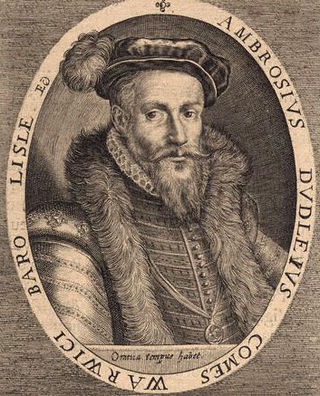
Ambrose Dudley, 3rd Earl of Warwick, KG was an English nobleman and general, and an elder brother of Queen Elizabeth I's favourite, Robert Dudley, Earl of Leicester. Their father was John Dudley, Duke of Northumberland, who led the English government from 1550–1553 under King Edward VI and unsuccessfully tried to establish Lady Jane Grey on the English throne after the King's death in July 1553. For his participation in this venture, Ambrose Dudley was imprisoned in the Tower of London and condemned to death. Reprieved, his rehabilitation came after he fought for King Philip in the Battle of St. Quentin.
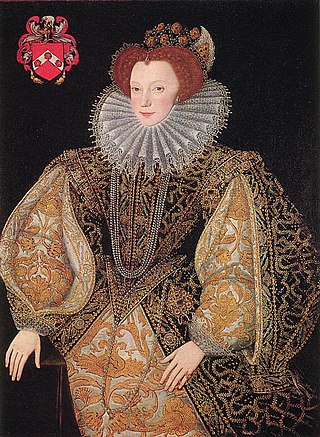
Lettice Knollys, Countess of Essex and Countess of Leicester, was an English noblewoman and mother to the courtiers Robert Devereux, 2nd Earl of Essex, and Lady Penelope Rich. By her second marriage to Elizabeth I's favourite, Robert Dudley, Earl of Leicester, she incurred the Queen's unrelenting displeasure.

The Lord Leycester Hospital is one of the best preserved examples of medieval courtyard architecture in England and is a charity supporting ex-servicemen. It is located in Warwick, England, next to the West Gate, on High Street. It is a Grade I listed building. The hospital is a prominent feature of Warwick. For almost 900 years buildings have been erected and civic activity has taken place on the site, starting with the chapel built in 1126. The site was donated by the 12th Earl of Warwick in the 14th century to the United Guild of the Holy Trinity and St George. The Guild Hall, Great Hall and Master's House were constructed in the late 15th century. Over the centuries, the ancient buildings and 500 year old gardens have been admired by visitors such as Charles Dickens and Oscar Wilde, King George V and the Queen Mother and travellers from around the world.
Alice Montacute was an English noblewoman and the suo jure 5th Countess of Salisbury, 6th Baroness Monthermer, and 7th and 4th Baroness Montagu, having succeeded to the titles in 1428.
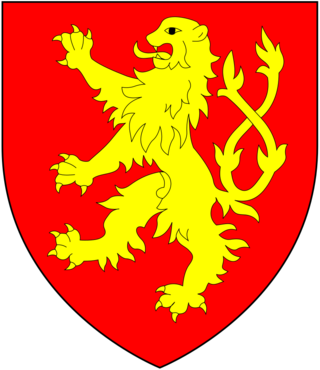
The title of Baron Burghersh has been created three times in the Peerage of England.

The titles Baron Montacute or Baron Montagu were created several times in the Peerage of England for members of the House of Montagu. The family name was Latinised to de Monte Acuto, meaning "from the sharp mountain"; the French form is an ancient spelling of mont aigu, with identical meaning.
Aldwine was a medieval Bishop of Lichfield and Bishop of Leicester.

The House of Beaumont was one of the great Anglo-Norman baronial noble families, who became rooted in England after the Norman Conquest.
There have been three baronetcies created for persons with the surname Noel, two in the Baronetage of England and one in the Baronetage of Great Britain. One creation is extant as of 2008.
Cecily Neville, Duchess of Warwick, Countess of Worcester was a daughter of Richard Neville, 5th Earl of Salisbury and Alice Montacute, 5th Countess of Salisbury. Her siblings included Richard Neville, 16th Earl of Warwick; John Neville, 1st Marquess of Montagu; George Neville, ; Katherine Neville, Baroness Hastings; and Alice Neville, Baroness FitzHugh.
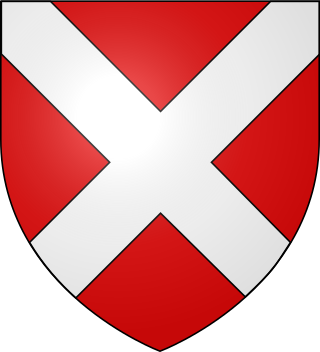
The House of Neville or Nevill family is a noble house of early medieval origin, which was a leading force in English politics in the Late Middle Ages. The family became one of the two major powers in northern England and played a central role in the Wars of the Roses along with their rival, the House of Percy.